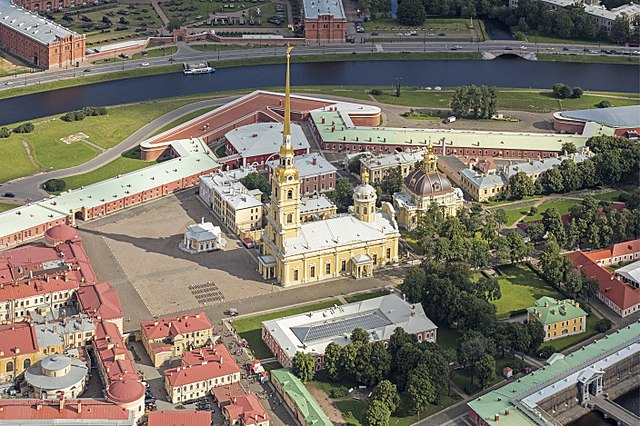The siege of Leningrad was a prolonged military siege undertaken by the Axis powers and co-belligerent Finland against the Soviet city of Leningrad on the Eastern Front of World War II. Germany's Army Group North advanced from the south, while the German-allied Finnish army invaded from the north and completed the ring around the city.
Soviet antiaircraft battery in Leningrad near Saint Isaac's Cathedral, 1941
German soldiers in front of burning houses and a church, near Leningrad in 1941
Wilhelm Ritter von Leeb with Erich Hoepner in September 1941
Hitler with Finland's Marshal Carl Gustav Mannerheim and President Risto Ryti meeting in Imatra in 1942
Saint Petersburg, formerly known as Petrograd and later Leningrad, is the second-largest city in Russia after Moscow. It is situated on the River Neva, at the head of the Gulf of Finland on the Baltic Sea. The city had a population of roughly 5.6 million residents as of 2021, with more than 6.4 million people living in the metropolitan area. Saint Petersburg is the fourth-most populous city in Europe, the most populous city on the Baltic Sea, and the world's northernmost city of more than 1 million residents. As Russia's Imperial capital, and a historically strategic port, it is governed as a federal city.
Catherine Palace in Tsarskoe Selo
Image: Winter Palace Panorama 3
Image: Palace Bridge SPB (img 2)
Image: RUS 2016 Aerial SPB Peter and Paul Cathedral








